|
WWII JAPANESE ARMY WAKISASHI SWORD - #21 -
Japanese Samurai swords are highly sought after military antiques. The form and function of the weapon has made
it famous. many accounts from the battles in the South Pacific during WWII bear testimony to the strength of the
weapon.
The end of the war marked the begining of the implementation of sowrd ownership restrictions in Japan. As a result
many soldiers and civilians turned their swords to the American occupying forces. Many of these swords found their
demise at the bottom of the Pacific ocean or in the smelters where they were melted to be reused as something else.
However, a percentage of the swords found their way back to the United States as war souvenirs.
The sword featured here is a Japanese Wakisashi Samurai sword. It is composed of a combination of WWII and late
1800's components. This was not an uncommon thing to occur since several soldiers brought their family swords to
combat.
The fittings on this sword are very nice. Unfortunatelly the blade has been polished excessively or inapproprietly,
causing some damage to it.
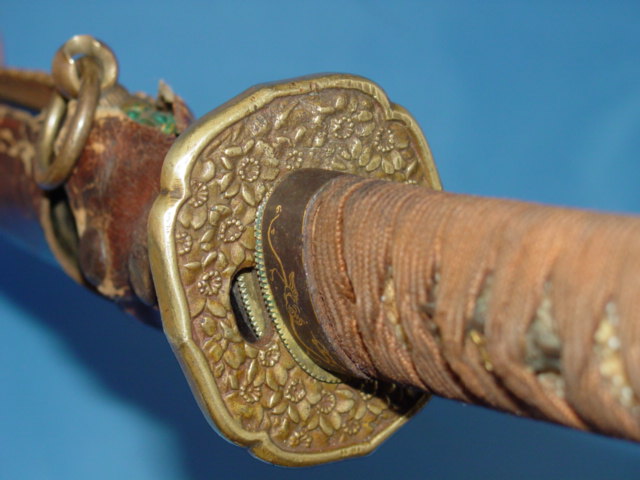
The hand guard (Tsuba) is of older production. Very nicely adorned with an array of Chrisantemum flowers. The
hole is placed there so that a leather strap with a snap on its end could go through and be snapped closed, therefore securing the blade to the scabbard.
This is a view of the side of the blade and scabbard. The scabbard is covered with a brown leather wrap. Some
damage has occured from drynes. A double colored tassle is attached to the ring by the pommel.
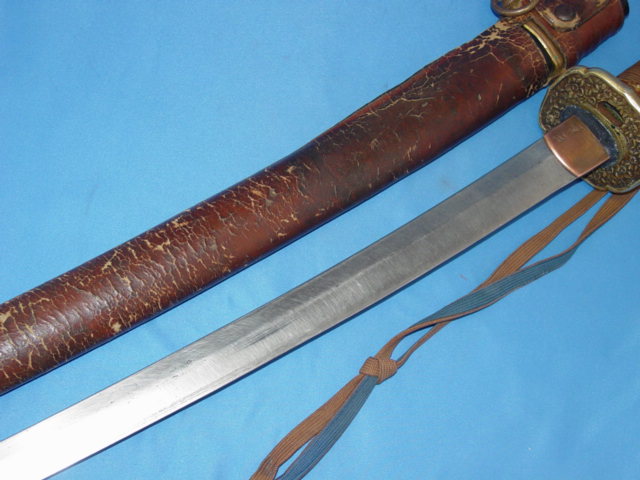
|
This page is a recognition and identification guide for Samurai swords.
Multiple detailed photos of a specific sample are provided. Descriptions point
out clearly defined points that should be noted.
One of the most commonly asked questions is "How much is my Samurai Sword worth?".
A price guide is included here to address this question. The value of the swords is
reviewed over a period of several years. A trend can be observed. The present worth
of the edge weapons in the collector's market is illustrated.
This service is provided free of charge to the visitor/enthusiast courtesy of
MilitaryItems.com,
a company dedicated to the preservation of military history and to providing quality
military antiques and collectibles to museums, institutions and the general public.
|
|
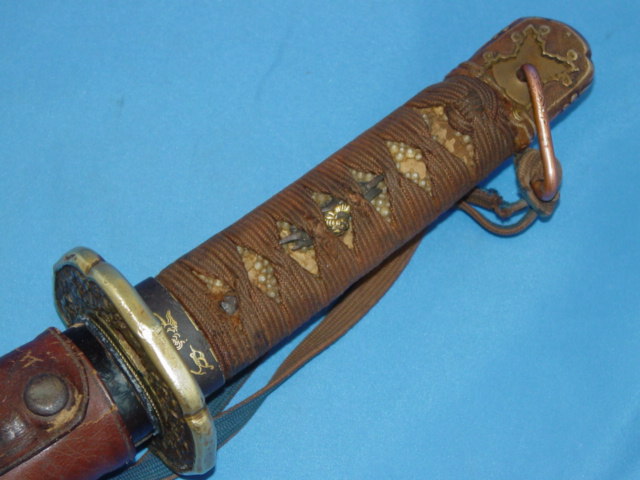
The handle is nicely, tightly wrapped with brown cord. This is typical of the WWII period. The Menuki adorns the
side of the handle. This is an older Menuki. The ray skin is present and shows nice pebbling.
The picture also shows the brown snap buttons used to secure the leather cover shut.
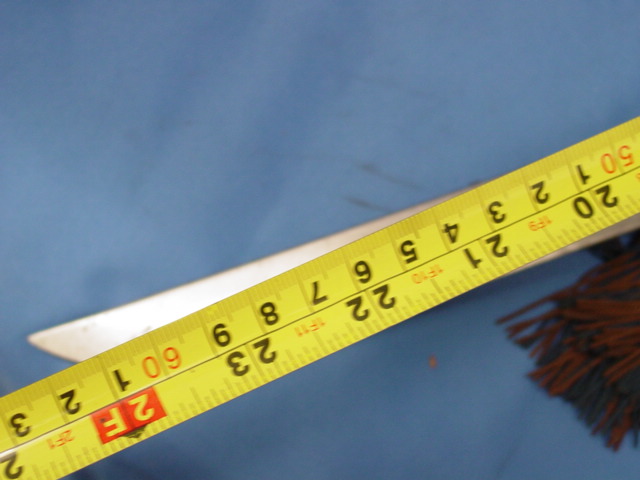
The Wakisahi has a length of 2 feet. From the pommel to the tip of the blade. This length is considerably shorter
than a Katana. This is by design. The Wakisashi was developed to allow the warrior to fight in confined spaces,
such as inside a house. Wielding a Katana under those circumstances could prove less than effective and may have
an adverse result on the fighter.
A smaller size also meant that the weapon could be handled with a single hand. Allowing the soldier to hold two
weapons, one in each hand, or to have a better fighting chance when wounded in one arm.
The Wakisashi was meant to be a companion to the Katana.
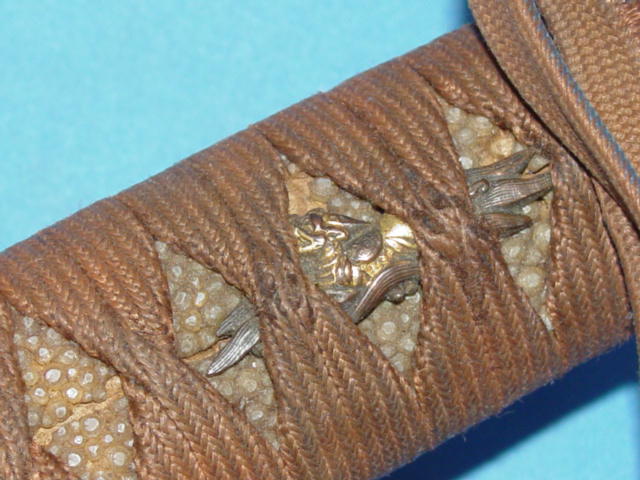
This is a closer view of the Menuki. It has a combination of bronze and guild colors.
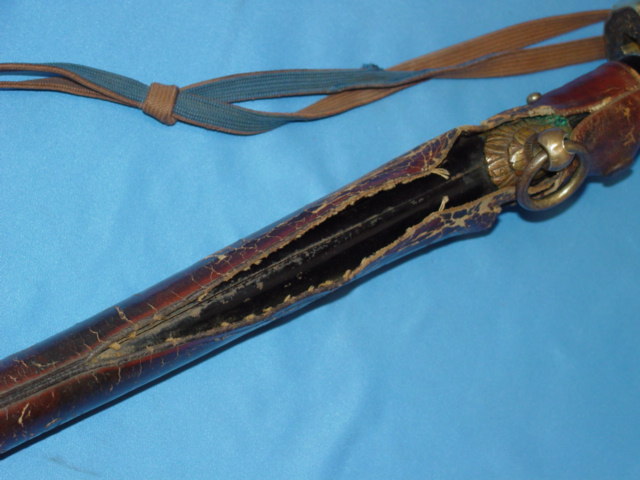
The side of the scabbard's leather cover has split apart revealing a black colored scabbard. Manufacturing the
scabbard is an art in itself. A ring is attached to the side. This was designed to allow the soldier to hang the
sword from the belt. however, this practice was seldom employed as most of the time soldiers would run the sword
through the belt, just as the original Samurai warriors would in days past.
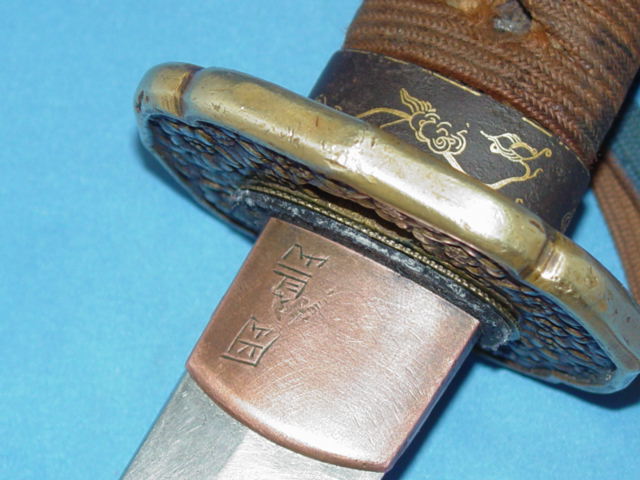
The Habaki is signed. This is interesting since most of the time this piece does not have any markings
other than its ornamentation (if applied).
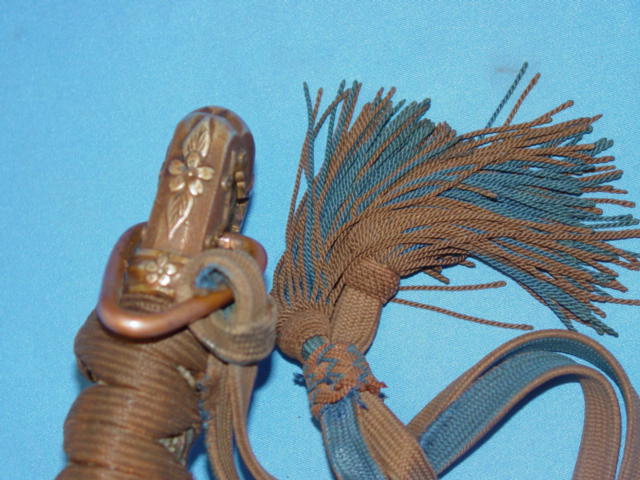
The pommel has the classical WWII Japanese Imperial Army symbol. This is all WWII standard issue. Another view of
the tassle reveals that the double color, brown and blue, carries to the small strands at the end. Colors remain
fairly bright.
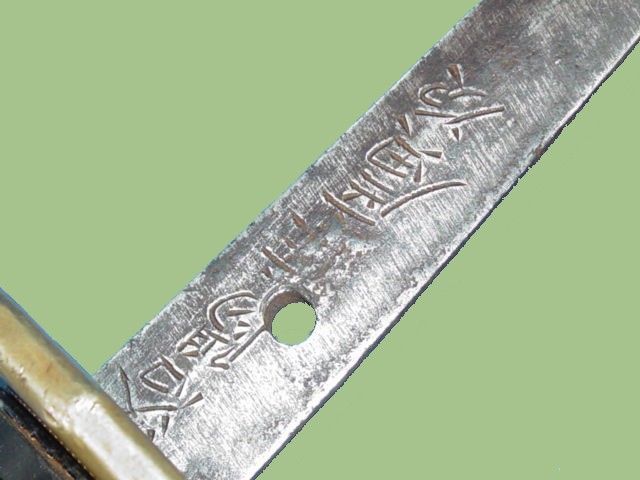
The tang of the blade is signed. Originally there would have been some rust to the tang, however, somewhere along
the line it was buffed out. It is not a good practice to clean this section. The hole in the tang is used to
secure the handle to the blade.
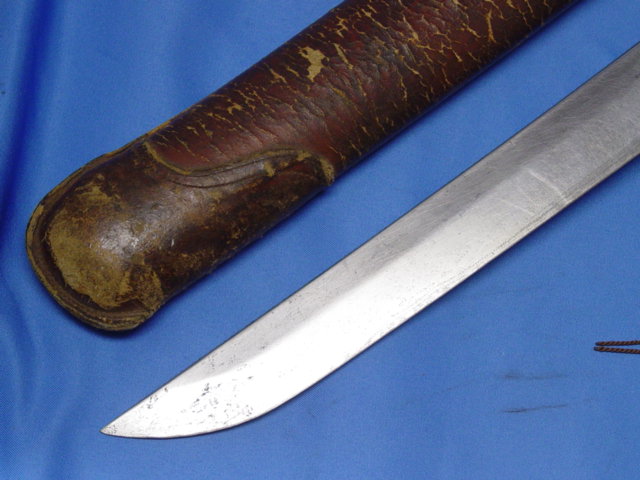
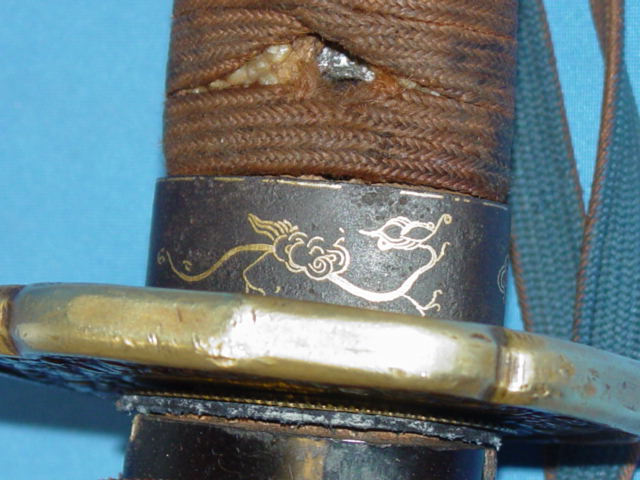
This Samurai Sword may be currently reproduced.
It is becoming more difficult to be able to tell the fake ones from the real ones because
the quality of the reproductions is improving. The collector must become familiarized with
the construction style and materials employed in the manufacturing of this item.
Attention to the details is critical in order to be able to determine the authenticity of
the collectible.
If you have an interest is seeing other Japanese Samurai swords, you can do so by going to our
Japanese Samurai Swords Price Guide
identification guide. Where we cover Samurai swords from all periods.
| 




